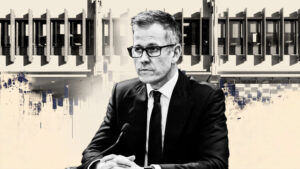Life seemed much easier for business leaders when they could just complain about what they perceived to be excessive and inconsistent sustainability regulations. Complex, global disclosure requirements – some mandatory, some voluntary – elaborate supply chain due diligence processes, greenhouse gas emissions reporting: they all seemed challenging enough. But when the regulators themselves started changing, editing, simplifying and clarifying already agreed upon sustainability mandates, and adjusting course on associated policy, that’s when things got really complicated.
Regulatory Uncertainty Sends Mixed Signals
In the European Union (EU), for example, recently leaked documents have revealed continued disagreement among EU Member States over key details of the Omnibus Simplification Package, an initiative launched earlier this year to harmonize and simplify existing sustainability mandates. The mere introduction of the simplification initiative caused a stir as most of the world thought the rules were already finalized. Now that they’ve been reopened, the drama has only intensified. Meanwhile, the European Financial Reporting Advisory Group (EFRAG), the organization appointed to develop the original technical guidance and now working on the revision of the European Sustainability Reporting Standards (ESRS) as part of this Omnibus Simplification Package, recently had its work plan rejected as some Council members have expressed a lack of confidence in its implementation plans.
In the U.S., where the Environmental Protection Agency (EPA) has launched its biggest ever deregulatory action and the Securities and Exchange Commission has abandoned its plans to introduce climate disclosure rules, the situation for businesses has become even more complicated. While some companies have seized on the changing political winds to distance themselves from corporate sustainability initiatives, numerous investors and other stakeholders have started to push-back and are still demanding clarity on climate goals and other sustainability commitments.
Suddenly, it seems that navigating sustainability has become less about following a straight-line path to compliance and more about avoiding the rocky outcroppings of hidden risks.
Data is Still the North Star
For businesses caught in the middle, the only real solution is to focus on the material bottom-line sustainability and resilience risks and opportunities that will affect the business. For example, even though the EU is still in the process of determining the best next steps for the Corporate Sustainability Reporting Directive (CSRD) and Corporate Sustainability Due Diligence Directive (CSDDD) and the U.S. looks like it will not be enforcing the proposed climate disclosure rules, those things do not mean climate and sustainability-related risks have gone away for businesses. In fact, it is important to note that in Europe, although the regulatory drivers have been delayed or are being simplified, the laws are still on the books, and in scope companies around the world will no doubt eventually need to comply with whatever the final versions stipulate.
The North Star for businesses trying to find their way through this period of uncertainty needs to be concrete data identifying real business risks stemming from climate-related extreme events, carbon emissions, employee safety, human capital and rights and environmental impact. Regardless of the specific details of any piece of legislation, these core fundamentals will affect every business’ ability to be viable and profitable for the next ten, twenty or thirty years through countless different economic and political cycles.
Voluntary Reporting Standard Offers An Alternative
One good guide for companies looking to keep moving forward with their disclosure reporting is the EFRAG Voluntary Sustainability Reporting Standard for Non-Listed SMEs (VSME). Although this standard was developed initially for small businesses who wanted to voluntarily align their sustainability reporting practices with the CSRD, it is now increasingly being looked upon by considerably larger enterprises as a possible playbook, offering a standardized approach. Now that the reporting threshold for the CSRD has risen to include only companies with 1,000 or more employees, the VSME has become a sort of de facto guide for those businesses that had already started preparing for CSRD before they fell out of scope as a part of the Omnibus negotiations.
While a few companies may look at the current delays, policy shifts and general sense of deregulation as an excuse to slowly roll back their sustainability initiatives, the fact is that investors, employees, consumers and other stakeholders are still demanding some level of accountability and transparency. Moreover, they are looking for that information to be reported in a standardized, consistent and most of all, comparable format from one company to the next. Those companies that recognize that need and continue to do the work now to keep their sustainability houses in ship shape order, will still be best positioned to not only anticipate and respond to real business risks but also to be sustainable in the true sense of the word. That means they will be viable, resilient and able to maintain and create value for many years to come.
Read the full article here
















